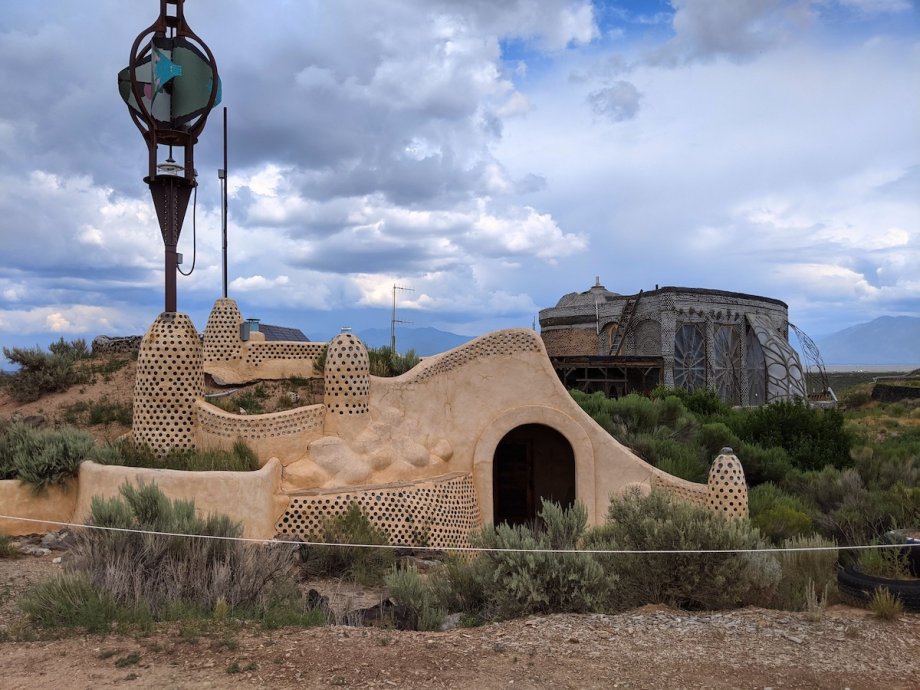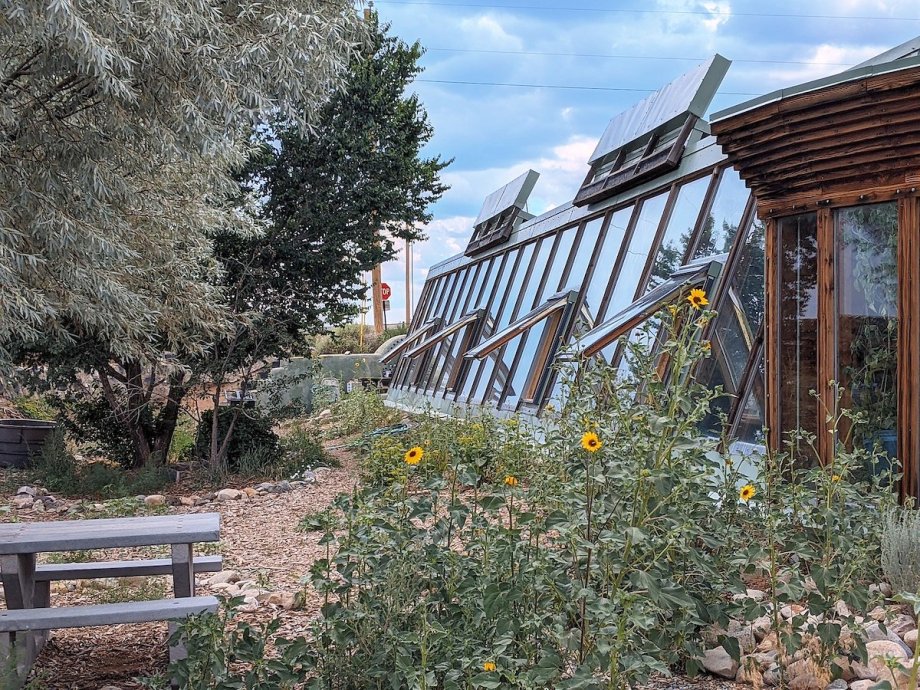
What in the world is an Earthship?
Like many, Whitney Yeboah wasn't sure either until she learned of Mike Reynolds, of Taos, New Mexico, after taking an ecotourism class at South Dakota State University.
Since the 1970s, Reynolds has been building Earthships—self-sustaining, off-grid homes that are made from recycled materials—in the New Mexico desert. Yeboah, who was pursuing a master's degree in SDSU's Department of Geography and Geospatial Sciences at the time, decided she wanted to revolve her thesis work around Earthships.
"The class spiked my interest in Earthships, and I was very curious on how these buildings function off-grid," Yeboah said.
While making multiple trips to Taos to interview people who lived in Earthships wasn't possible for this project, Yeboah shifted course and decided to localize her work by researching how feasible Earthships in Brookings County would be.
Popularity of Earthships on the rise
While the concept of Earthships have been around for more than 40 years, they didn't start gaining traction amongst the general public until the last decade or so. Then the COVID-19 pandemic hit and Earthships, for one reason or another, began exploding in popularity.
Today, Earthships—or some variation of a "self-sustaining" home—can be found in nearly every state. Reynolds himself leads courses on how to build Earthships and travels around the world teaching people how to build them.
"The design of an Earthship is based on a series of principles that aim to create a self-sustaining and energy-efficient living environment," Yeboah said.
The six principles are: building with natural and repurposed materials, passive solar design, thermal mass, rainwater harvesting, sewage treatment and food production. Used tires are commonly used for the walls, while solar panels or wind energy are used to power the home. Previous research has shown that Earthships require 20% less investment to build than conventional homes.

Would Earthships work in Brookings County?
To assess the feasibility of Earthships in Brookings County, Yeboah devised and sent out a survey to county residents to gather data and feedback surrounding the perceived benefits and barriers of Earthships.
"The need exists to find out how willing residents in the country are to adopt new strategies that can promote sustainability," Yeboah said. "This study will contribute to ways of achieving sustainability in our communities
The survey results showed that many people had never heard of any Earthship before, but that didn't mean they were necessarily opposed to them.
"I have studied a lot about sustainable building construction, being in the architecture field, and I am hoping this starts to become more relevant in the Midwest," one respondent said.
"It was interesting to learn that people had positive remarks on Earthships," Yeboah said.
Respondents also expressed that sustainability was an important characteristic to them, with a majority expressing that sustainability was either "extremely important" or "moderately important."
"Overall, this data shows there is a positive view of the importance of sustainability in Brookings County," Yeboah said.
In terms of perceived benefits, respondents were most interested in Earthships utilizing renewable energy resources and locally sourced materials. They were also interested in the concept of harvesting rainwater and reusing greywater. Of less—but still significant—importance was the elimination of energy bills by living off-grid.
"What I learned from this research is that sustainability is possible, especially if we think outside the box," Yeboah said. "In terms of sustainability, little things can make a big difference."
Brookings County residents viewed the primary barrier to Earthships as "extreme winter temperatures."
"My biggest concern with an Earthship in Brookings County would be extremely cold during the winter when it is frequently cloudy and solar may not have as much of an impact to generate heat," one respondent said.
Other perceived barriers included the dependence on water and energy coming strictly from renewable sources. Previous findings found zoning laws and permits to be a significant barrier to Earthships; however, no such policies exist in Brookings County.
Takeaways
While Earthships are an intriguing way of living a sustainable lifestyle, more research is needed to assess their viability in Brookings County, Yeboah noted.
"The adoption of Earthships in Brookings County will go a long way to contribute to the sustainable lifestyle of the community and release pressure on the county's natural resources," Yeboah noted in her thesis.
George White, professor in the Department of Geography and Geospatial Studies, was Yeboah's adviser.
- Contact:
- Telephone number: 605-688-6161
Republishing
You may republish SDSU News Center articles for free, online or in print. Questions? Contact us at sdsu.news@sdstate.edu or 605-688-6161.

